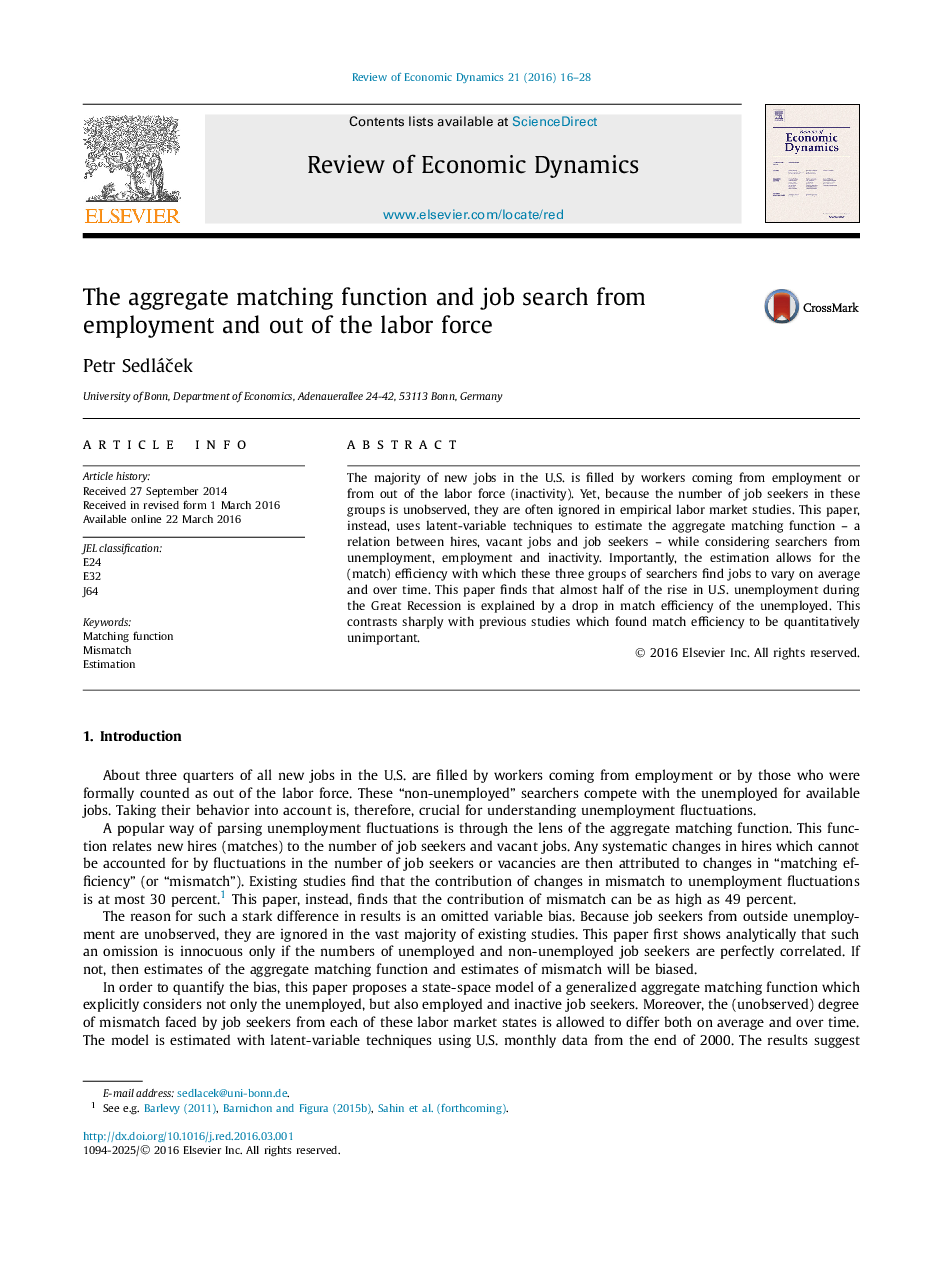| Article ID | Journal | Published Year | Pages | File Type |
|---|---|---|---|---|
| 7388259 | Review of Economic Dynamics | 2016 | 13 Pages |
Abstract
The majority of new jobs in the U.S. is filled by workers coming from employment or from out of the labor force (inactivity). Yet, because the number of job seekers in these groups is unobserved, they are often ignored in empirical labor market studies. This paper, instead, uses latent-variable techniques to estimate the aggregate matching function - a relation between hires, vacant jobs and job seekers - while considering searchers from unemployment, employment and inactivity. Importantly, the estimation allows for the (match) efficiency with which these three groups of searchers find jobs to vary on average and over time. This paper finds that almost half of the rise in U.S. unemployment during the Great Recession is explained by a drop in match efficiency of the unemployed. This contrasts sharply with previous studies which found match efficiency to be quantitatively unimportant.
Related Topics
Social Sciences and Humanities
Economics, Econometrics and Finance
Economics and Econometrics
Authors
Petr SedláÄek,
